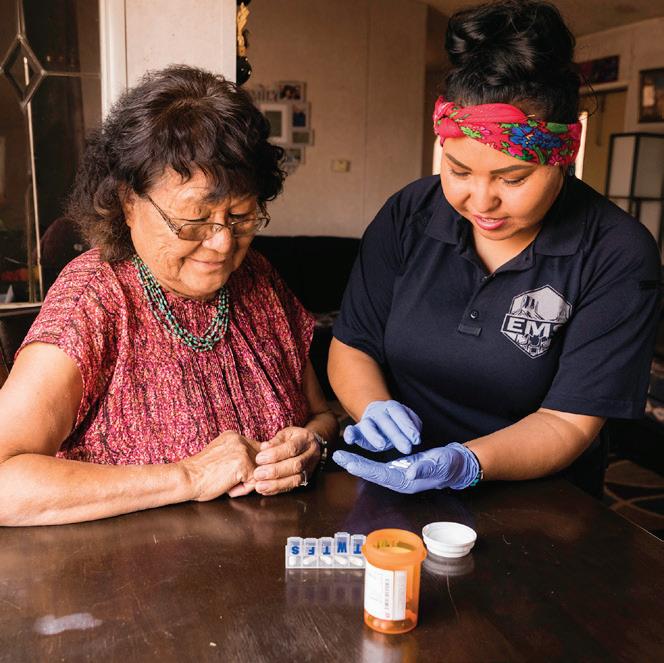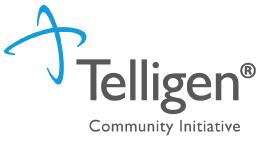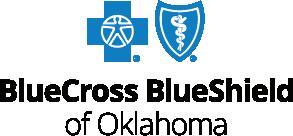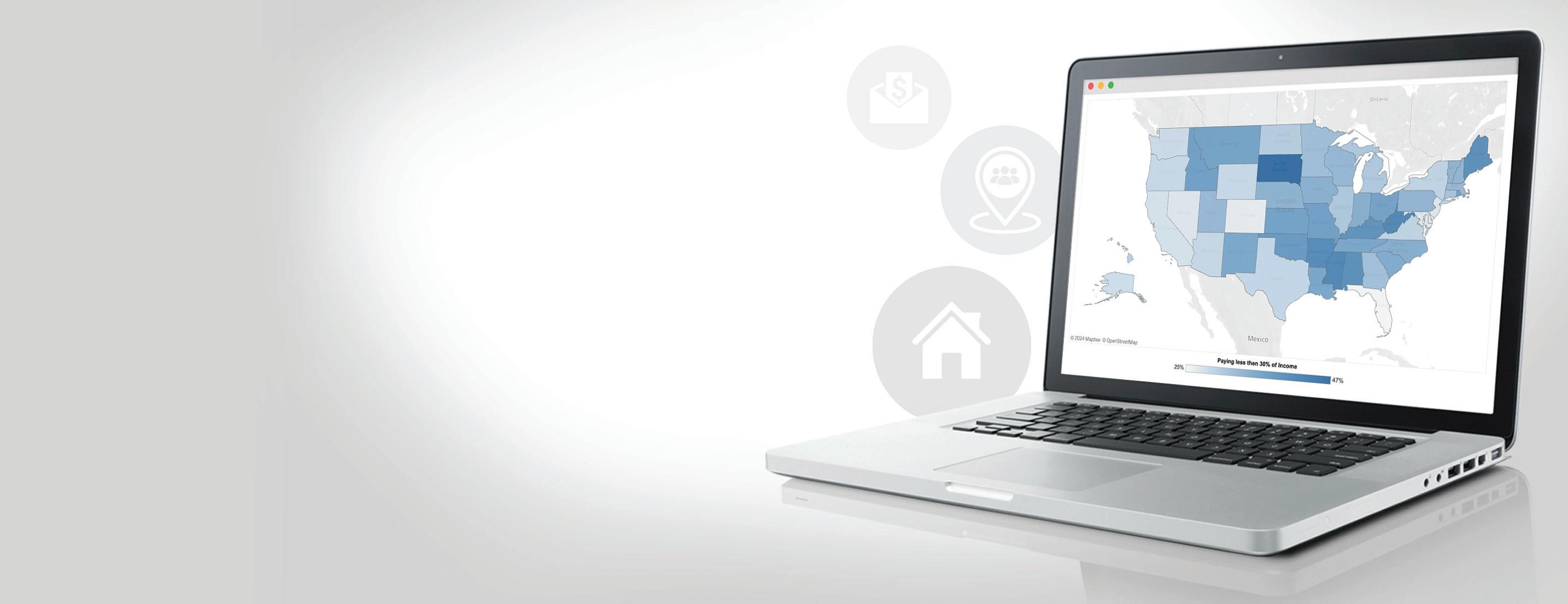ALICE IN OKLAHOMA:
A STUDY OF FINANCIAL HARDSHIP









ALICEinOklahoma:AStudyofFinancialHardship is brought to you by Tulsa Area United Way in partnership with United For ALICE , a driver of innovative research and action to promote financial stability for ALICE® ( Asset Limited, Income Constrained, Employed) households. With a commitment to economic justice, United For ALICE and United Ways across Oklahoma share this work with foundations, government, corporations, and other nonprofits to inform policy and promote positive change for ALICE households.
The grassroots ALICE movement, developed by United Way of Northern New Jersey, has spread to 37 states and the District of Columbia. Learn more about the ALICE movement here.
To create the ALICE Reports, our team of researchers works with Research Advisory Committees composed of experts from our partner states. This work is guided by our rigorous methodology, which is updated biennially with experts from across our Research Advisory Committees.
Director and Lead Researcher : Stephanie Hoopes, Ph.D.
ALICE Research Team: Andrew Abrahamson; Ashley Anglin, Ph.D.; Catherine Connelly, D.M.H., M.A.; Jessica Fernandez; Victoria Mutuku, M.A.
United For ALICE partners with Tulsa Area United Way to bring this research to Oklahoma, and this work is sponsored by Telligen® Community Initiative, Blue Cross and Blue Shield of Oklahoma, and JPMorganChase.



To learn more about how you can get involved in advocating and creating change for ALICE in Oklahoma, contact: Melanie Poulter, Director of Research and Data, Tulsa Area United Way, mpoulter@tauw.org
z Ama Abrokwah, Ph.D., TulsaRegionalChamberof Commerce
z Sean Berkstresser, Tulsa Public Schools
z Chris Bernard, J.D., HungerFreeOklahoma
z Matthew Brooks, Chickasha Economic DevelopmentCouncil
z Evan Davis, Ph.D., SpearsSchoolofBusiness,Oklahoma StateUniversity
z Katie Dilks, J.D., Oklahoma Access to Justice Foundation
z Christy Finsel, Ph.D., Oklahoma Native Assets Coalition, Inc.
z Amber Guipttons, CityofTulsaOfficeofFinancial EmpowermentandCommunityWealth
z Delia Kimbrel, Ph.D., ImpactTulsa
z Luke Lawson, Ph.D., ImpactTulsa
z Daniel Matthews, CommunityMarketof PottawatomieCounty
z Tracy Meeuwsen, Avedis Foundation
z Joy Pendley, Ph.D., UniversityofOklahoma
z Griffin Pivateau, J.D., SpearsSchoolofBusiness,Oklahoma StateUniversity
z Carly Putnam, OklahomaPolicyInstitute
z Sarah Rahhal, LCSW,SunbeamFamilyServices
z Halley Reeves, MPH, MCP, HudsonCollegeofPublicHealth, TheUniversityofOklahoma
z Quinton Scott, PPLSI/LegalShield
z Steven Shepelwich, FederalReserveBankofKansasCity
z Kelsey Wagner, PoncaCity
Dear Oklahoma Friends and Neighbors,
Oklahomans are known for many things: rugged individualism, humor, creativity, resilience. Our state’s unique voice is a mixture of strength and insight into the experiences of working people – people who built back from dust, firebombs, tornadoes, forced displacement, and domestic terror. We are a thriving state of sovereign nations, nonprofit organizations, and government. We have always valued working families in Oklahoma because as Oklahomans, we believe in the value of hard work, and that hard work should be valued.
Our mission at Tulsa Area United Way is to unite people and resources to improve lives and strengthen communities. This work plays out every day to activate people through citizen philanthropy, grantmaking, and volunteerism, fueled by our vision – a community that works together to ensure that all people can flourish and thrive.
Increasingly, United Ways across the state are seeing growing numbers of Oklahomans who, despite being employed, find themselves unable to make ends meet and unsure where to turn for help. We have witnessed the rising cost of groceries and the decreased availability of affordable housing. We know that in 2024 alone, 68% of people who reached out to 211 Eastern Oklahoma for support were first-time callers. Thanks to this newly released ALICE Report for Oklahoma, we are now able to more accurately define and assess the extent of financial struggle across the state.
Who is ALICE? ALICE is Asset Limited, Income Constrained, Employed. In Oklahoma, 45% of households have income levels below the ALICE Threshold of Financial Survival and consequently are unable to afford basic costs of living. ALICE may be a neighbor, a friend, or a member of your family. ALICE may be your child’s teacher or the health care worker caring for your aging parent. ALICE often earns too much to qualify for public assistance such as SNAP or Medicaid. Month by month, ALICE individuals must make impossible choices between buying food, paying for childcare, or making a utility payment.
With this inaugural ALICE Report, Tulsa Area United Way is proud to join the ALICE movement in partnership with United for ALICE, other Oklahoma United Ways, and trusted sector knowledge experts across the state to share resources that ultimately open pathways for all Oklahomans to thrive. This report, which is made possible by our generous sponsors, Telligen Community Initiative, Blue Cross and Blue Shield of Oklahoma, and JPMorganChase, will spark a deeper conversation about financial instability and opportunities to build solutions in our state. Availability of data and shared language are just the first steps in what we see as a truly uniting opportunity for Oklahoma. ALICE deserves a name. ALICE deserves our attention. We are Oklahomans and we have always been for ALICE. We hope you will join us!
Sincerely,


Alison Anthony President & CEO
Tulsa Area United Way
Tulsa Area United Way
Ada Regional United Way
Bartlesville Regional United Way
Lake Area United Way
United Way of Central Oklahoma
United Way of Eastern Frontier Country
United Way of Enid & Northwest Oklahoma
United Way of Norman
United Way of North Central Oklahoma
United Way of Payne County
United Way of South Central Oklahoma
United Way of Southwest Oklahoma
United Way of Stephens County
Visit UnitedForALICE.org to explore the interactive data and resources that accompany this Report. Click the icons below to get started.
National Overview
National data and state comparison
ALICE Demographics
State, county, and regional demographic data
ALICE Household Budgets
State, county, and regional budgets
Mapping Tool
Explore data for all available geographies (state, county, municipality, ZIP code)
Income Status Tool
Input income, household type, and location to see household ALICE status
County Reports
All available county data in a shareable format
Legislative District Tool
See data by state upper and lower chambers and congressional district
Economic Viability Dashboard
Key data on work, housing, and community resources
ALICE Essentials Index
Data on change over time in the cost of household basics
Data Sheet
State ALICE data over time and by location
Wage Tool
Identify counties where select hourly wages can support basic costs
Methodology
Sources and calculations used in the ALICE research
Research Advisory Committees
Learn about the members and roles of these critical groups
ALICE in Focus
A closer look at hardship for children, people with disabilities, and veterans
National ALICE Team
Meet members of the United For ALICE staff
ALICE in Action
ALICE Videos
ALICE Voices
Hear directly from ALICE or share your own ALICE story
Programs, practices, and policy changes implemented by the ALICE network
Videos that highlight ALICE stories, research, and partner impact



This ALICE Report for Oklahoma provides the most comprehensive look at the population called ALICE — households that have income above the Federal Poverty Level (FPL) but struggle to afford household basics. This Report includes a detailed point-in-time snapshot of economic conditions across the state in 2023, as well as key data and trends from the Great Recession through the COVID-19 pandemic and beyond.
Two pillars of the ALICE measures are household costs and income. The ALICE Household Survival Budget calculates the cost of household essentials for each county in Oklahoma and relies on a wide range of public data sources for the budget items of housing, child care, food, transportation, health care, and technology, plus taxes and cost overruns estimated at 10% of the budget (see figure on page 2). Household Survival Budgets are calculated at the county level, as counties are the smallest jurisdiction for which there is reliable data across the country.
These household costs are used to create the ALICE Threshold of Financial Survival. This measure is used to determine how many households have income below the ALICE Threshold. This category includes both households in poverty, with income below the FPL, and those that are ALICE, with income above the FPL but below the cost of basics.
Income data is based on estimates from the U.S. Census Bureau’s American Community Survey (ACS) — both household tabulated data and individual data from the Public Use Microdata Sample (PUMS) records. In addition, this Report includes our analysis of two surveys that capture the experiences of a nationally representative sample of households:
z Federal Reserve Board’s Survey of Household Economics and Decisionmaking (SHED), October 2023
z U.S. Census Bureau’s COVID-19 Household Pulse Survey (Household Pulse Survey), part of the Census Experimental Series, which captures short-turnaround results and therefore should be interpreted with some caution. Time periods include August 19–31, 2020, and January to October 2024.
Learn more about our methodology at UnitedForALICE.org/ Methodology.
ALICE: Asset Limited, Income Constrained, Employed — households with income above the Federal Poverty Level (FPL) but below the basic cost of living in their county. Despite struggling to make ends meet, ALICE households often do not qualify for public assistance.
ALICE Household Survival Budget: Reflects the minimum costs of household necessities in New Mexico (housing, child care, food, transportation, health care, and technology) plus taxes, adjusted for all U.S. counties and various household compositions
ALICE Threshold of Financial Survival: Derived from the Household Survival Budget, the minimum average income that a household needs to afford basic costs, calculated for all U.S. counties
Below ALICE Threshold: Includes households in poverty and ALICE households combined
ALICE Essentials Index: A measure of the average change over time in the costs of essential goods and services
Data Notes: The income data used in this Report relies on ACS estimates. The ACS is based on a representative sample of housing units and people; therefore, these estimates have a degree of uncertainty. Some data points are geographic averages; others are one- or five-year averages depending on population size (see the Data Sheet for details). Percentages are rounded to whole numbers, sometimes resulting in percentages totaling 99% or 101%. ALICE analysis includes households regardless of work status, as employment is fluid and most households have members who are working, have worked, are out on disability, or are looking for work. ALICE analysis does not include people who are unhoused or living in group quarters.
Data Limitations: United For ALICE research relies on data from the U.S. Census Bureau. Certain populations are more likely to be undercounted in the Census. Hard-to-count populations include (but are not limited to) people with disabilities, people experiencing homelessness, non-English speakers, and people in lower-income communities. Also included in this category are populations that have been historically undercounted in the Census, including American Indian/Alaska Native, Black, and Hispanic populations. All of these categories can overlap and some populations fall into more than one of them, increasing the likelihood of being undercounted.
Housing
Child Care
Food
Transportation
110% of Fair Market Rent (FMR). Unit size and type corresponds to the household (e.g., an efficiency apartment for one person and a one-bedroom rental for two people), including utilities, adjusted in metro areas using Small Area FMR.
Source: U.S. Department of Housing and Urban Development
Cost for registered Family Child Care Homes for infants (0–2 years), preschool-age children (3–4 years), and schoolage children (5–12 years)
Source: Oklahoma Department of Human Services
USDA Thrifty Food Plan by age, with county variation from Feeding America
Sources: Feeding America; U.S. Department of Agriculture (USDA)
Operating costs for a car (average daily miles by age, cost per mile, license, fees, and insurance), or public transportation where viable
Sources: AAA, Federal Highway Administration, National Association of Insurance Commissioners (NAIC) (car); Consumer Expenditure Survey (CEX) (public transportation)
Technology
Miscellaneous
Taxes
Health insurance premiums based on employer-sponsored plans plus out-of-pocket costs for households with $40,000–$69,999 annual income by age, weighted with the poor-health multiplier. For the ALICE 65+ Survival Budget, cost of Medicare Parts A and B, out-of-pocket costs, plus average out-of-pocket spending for the top five chronic diseases as reported by CMS.
Sources: Centers for Medicare & Medicaid Services (CMS); CEX (health); Medical Expenditure Panel Survey (MEPS)
Basic broadband internet at home and a smartphone plan with unlimited data for each adult in a household
Sources: Consumer Reports; USTelecom
Cost overruns estimated at 10% of the budget, excluding taxes, to cover one-time unanticipated costs within the other categories
Taxes are based on the household income needed to cover the Household Survival Budget. They include federal payroll taxes (Social Security and Medicare) and federal and state income taxes, as well as the federal Child Tax Credit and the Child and Dependent Care Tax Credit. Tax calculations are prepared by the Federal Reserve Bank of Atlanta (FRBA) using their Policy Rules Database
Sources: Internal Revenue Service; Tax Foundation
Formoredetails,seethe2025ALICEResearchMethodology Overview
The number of households in financial hardship in Oklahoma is undercounted by official measures. According to the Federal Poverty Level (FPL), 16% of households in Oklahoma (244,654) were in poverty in 2023. Yet United For ALICE data shows that another 29% (456,798 households) — nearly twice as many — were ALICE ( Asset Limited, Income Constrained, Employed). ALICE households have income above the FPL, but not enough to afford the basics in the communities where they live.
The reality is that out of the 1.6 million households in Oklahoma, 701,452 — 45% — had income below the ALICE Threshold of Financial Survival in 2023. These included both households in poverty and ALICE households.
The crux of the problem is a mismatch between earnings and the cost of basics. The ALICE Household Survival Budget for a Oklahoma family of four in 2023 was $80,832, well above the FPL of $30,000 and full-time earnings for most low-wage jobs in the state. For example, retail salespersons (one of the most common occupations in Oklahoma) earned a median hourly wage of $14.03 — barely enough to cover the ALICE Household
Total Households in Oklahoma =
Survival Budget for one worker employed full time ($13.89 per hour), but far short of supporting a family with children, even with two adults working (combined wage of $40.42 per hour).
Note:TaxCreditsincludetheChildTaxCredit(CTC)andtheChildandDependentCareTaxCredit(CDCTC).Full-timehourlywagerepresentsthewageneededat40hoursperweektosupport theannualtotal,withcredits.Forafamilyoffour,thisrepresentsthecombinedwageneededfortwoworkers.TheHouseholdSurvivalBudgetisabare-minimumbudget.Manyhouseholds incurhighercosts,especiallyforhousing.
Sources:AAA,2023;AmericanCommunitySurvey,2023;BureauofLaborStatistics,2023—ConsumerExpenditureSurveys;BureauofLaborStatistics,2023—OccupationalEmploymentStatistics; CentersforMedicare&MedicaidServices,2023—Medicare-ChronicConditions;CentersforMedicare&MedicaidServices,2020—MedicareCurrentBeneficiarySurvey;CentersforMedicare &MedicaidServices,2023;ConsumerReports,2022;FederalReserveBankofAtlanta—PolicyRulesDatabase,2023;FederalHighwayAdministration,2022;FeedingAmerica,2023;Internal RevenueService,2023;NationalAssociationofInsuranceCommissioners,2024;OklahomaDepartmentofHumanServices,2024;TaxFoundation,2023;U.S.DepartmentofAgriculture,2023— OfficialUSDAFoodPlans;U.S.DepartmentofHousingandUrbanDevelopment,2023—FairMarketRentsandSmallAreaFMR;USTelecom,2022.
ToseetheHouseholdSurvivalBudgetforallcountiesinOklahoma,goto UnitedForALICE.org/The-Cost-of-Basics/Oklahoma.
z The cost of basic needs in Oklahoma: In 2023, the average cost of household basics (housing, child care, food, transportation, health care, and technology) plus taxes in Oklahoma was $27,780 for a single adult (compared to the FPL at $14,580) and $80,832 for a family of four with two adults, an infant, and a preschooler (compared to the FPL at $30,000). Cost of living varied: For example, the Household Survival Budget for a family of four was lowest at $78,648 per year in Adair County and Beaver County and highest at $86,340 per year in Canadian County.
z Inflation of household essentials: In Oklahoma and across the country, the cost of household basics (captured in the ALICE Essentials Index) has increased faster than overall inflation (captured by the Consumer Price Index) for more than a decade. From 2007 to 2023, the average annual rate of increase for the ALICE Essentials Index was 3.1% both in Oklahoma and nationally, while the CPI increased 2.5% nationally.
z ALICE demographics: There are households below the ALICE Threshold across all demographic groups in Oklahoma. However, certain groups were more likely to experience hardship due to systemic racism, ageism, gender discrimination, and geographic barriers that limit many families’ access to resources and opportunities for financial stability. For example, in 2023:
» Byage, households headed by the youngest (under age 25) and oldest (age 65+) Oklahomans had the highest percentage below the ALICE Threshold, at 71% and 50%, respectively.
» Byrace,ethnicity,andtribalnationpolitical identification: 60% of Black, 52% of Native Hawaiian/ Pacific Islander, and 51% of both American Indian/ Alaska Native and Hispanic households were below the ALICE Threshold in Oklahoma, compared to 42% of White households and 40% of Asian households.
» Byhouseholdtype, single-female-headed families with children were more likely to be below the ALICE Threshold (79%) than single-male-headed (53%) or married-parent households (22%). Among single or cohabiting households without children, 45% were below the Threshold.
» Bylocation, households in predominantly rural counties were more likely to be below the ALICE Threshold (49%) than those in predominantly urban counties (42%).
z Trends in Oklahoma: Between 2010 and 2023, the total number of households in Oklahoma increased by 10%, the number of households in poverty increased by 8%, and the number of ALICE households increased by 22%. Behind these overall trends, there was also an increase in the number of households below the ALICE Threshold among families with children and households headed by people over age 65.
z Work and wages: Of the 20 most common occupations in Oklahoma, 15 paid less than $20 per hour in 2023. And of the workers in the top occupations, 37% were below the ALICE Threshold. Occupations with the largest share of ALICE workers included cooks, personal care aides, other healthcare support workers, janitors/building cleaners, and waiters/waitresses.
z Savings and assets: Lack of savings makes it difficult for ALICE households to weather economic disruptions, let alone plan for goals like homeownership or retirement. In 2023 only 26% of households below the ALICE Threshold in the West South Central Census Division (which includes Oklahoma) had emergency savings or rainy day funds, compared to 64% of households above the Threshold.
z Public Assistance: Programs like the Supplemental Nutrition Assistance Program (SNAP), Temporary Assistance for Needy Families (TANF), and Medicaid provide critical resources for households across the state. Yet most public assistance does not reach all households in need. For example, only 46% of all Oklahoma households in poverty and 20% of all ALICE households participated in SNAP in 2023.
z Ongoing Hardship for ALICE Families: The latest data from the 2024 Household Pulse Survey shows that more than half (54%) of households below the ALICE Threshold in Oklahoma reported that it was somewhat or very difficult to pay for usual items such as food, rent or mortgage, car payments, and medical expenses. These families are especially vulnerable to natural disasters, such as tornadoes, flooding, and wildfires.
z Stable households, stronger communities: In Oklahoma in 2023, bringing all households to the ALICE Threshold would have cost $15.3 Billion. Such an investment would spur new spending, benefiting the economy and building new resources and capacity for long-term community improvements. The data in this Report is primarily from 2010 to 2023 (latest data available) and therefore does not reflect policy or funding changes that have occurred since. However, the ALICE research provides an important baseline and context to inform current conversations and decision making.
Traditional economic measures underestimate both the actual cost of basic needs and the number of households that cannot afford them, concealing important aspects of the local and national economy. Two ALICE tools provide a more accurate estimate of the cost of living and a clearer way to track how many households are struggling in Oklahoma.
The ALICE Household Budgets capture the cost of the basics that households need to live and work in the current economy in each county, and the ALICE Essentials Index provides a measure to track changes in the costs of these basics. This section explores these tools and highlights the challenges ALICE families face in meeting basic needs.
United For ALICE provides two basic budgets: the ALICE Household Survival Budget and the ALICE Household Stability Budget. Both budgets are available for all Oklahoma counties and can be calculated for various household compositions.
The ALICE Household Survival Budget is an estimate of the minimal total cost of household essentials — housing, child care, food, transportation, health care, and technology — plus taxes and a miscellaneous contingency fund equal to 10% of the budget. It does not include savings, auto repairs, cable service, travel, laundry costs, or simple comforts such as holiday gifts or dinner at a restaurant. It’s just the essentials.
This budget varies by location due to differences in local costs. For example, in 2023, household basics were least expensive for a family of four in Adair County and Beaver County ($78,648 per year) and most expensive in Canadian County ($86,340 per year).
By comparison, instead of estimating minimal costs, the ALICE Household Stability Budget estimates the costs of a realistic, sustainable budget over time. The cost in each category is higher, reflecting modest improvement in quality and availability, and the budget includes a savings category equal to 10% of the budget total.
The FPL was formulated in the 1960s based on the cost of a minimum food diet and multiplied by three because it was assumed at the time to be one-third of a family budget. By statute, the measure is increased each year based on the Consumer Price Index (CPI). However, with broad shifts in society and work requirements, family expenses have changed. Food costs rarely account for one-third of a budget, and percentages vary widely by income level, geography, and ages of household members. As a result, the FPL has become detached from current family economics and is no longer an accurate measure of financial hardship. The Household Survival Budget corrects these issues and reveals the extent of the FPL’s inadequacies.
Yet despite its shortcomings, the FPL continues to be the standard for determining the number and proportion of people living in poverty in the U.S. With the FPL as the primary way for policymakers and local stakeholders to gauge the extent of financial hardship in their communities, a huge portion of struggling U.S. households go unrecognized.
The actual cost of household basics in every county in Oklahoma is well above the FPL for all household sizes and compositions (Figure 1). In 2023, the FPL was $14,580 for a single adult, compared to an average of $27,780 for the annual Household Survival Budget across Oklahoma. The cost differential was even larger for families: The FPL for a four-person family was $30,000 in 2023 across the U.S., while the Household Survival Budget for a family with two adults, an infant, and a four-year-old in Oklahoma was $80,832. And both budgets were substantially lower than the average Household Stability Budget for Oklahoma, which reached $46,692 for a single adult and $140,652 for a family of four.
Itemized ALICE Household Survival and Stability Budgets for all Oklahoma counties (and groups of counties) and for numerous household compositions are available at UnitedForALICE.org/The-Cost-of-Basics/Oklahoma.
Figure 1. The Cost of Basic Needs Is
Above the Federal Poverty Level ALICE Household Budgets and FPL, Oklahoma, 2023
Census poverty thresholds by number of people in a household but not by age or geography
The cost of the essentials needed to live and work in the current economy, by household type and location
The
of supporting and sustaining an economically viable household over time, including a contingency for savings
NoteFamilyoffourincludestwoadultsandtwochildreninchildcare(oneinfant,onefour-year-old).
Sources:ALICEHouseholdSurvivalBudget,2023;AssistantSecretaryforPlanningandEvaluation(ASPE),HHSpovertyguidelinesfor2023,U.S.DepartmentofHealthandHumanServices,2023
When wages cannot cover basic household costs, families struggle to make ends meet. ALICE workers perform jobs that keep Oklahoma’s economy running smoothly, such as cashiers, nursing assistants, office clerks, servers, laborers, and security guards. Despite wage increases through the pandemic and into 2023, many ALICE workers still could not cover the increased cost of household basics, and their families continued to struggle to make ends meet.
Figure 2 compares the Household Survival Budget costs for a family of four with two adults, an infant, and a preschooler to the full-time wages of two common Oklahoma occupations, a personal care aide (earning $12.33 per hour) and a stock worker/ order filler (earning $15.77 per hour). In 2023, this household’s annual income fell short of basic costs by $22,382, or 38% of their income. (For more data on how costs are increasing, see the ALICE Essentials Index.)
Figure 2 also shows that government measures underestimate the cost of basics and the number of households facing financial hardship:
z The Federal Poverty Level (FPL) : The FPL relies on an outdated methodology for household costs; it does not account for cost-of-living differences within and across
the continental U.S.; and it is adjusted by the Consumer Price Index, which underestimates inflation in essential costs. In 2023, Household Survival Budget costs in every Oklahoma county were well above the FPL of $14,580 for a single adult and $30,000 for a family of four.
z The Supplemental Poverty Measure (SPM): First published by the U.S. Census Bureau in 2011, the SPM is based on the costs of food, clothing, shelter, and utilities. In 2023, the SPM threshold for a renter household with two adults and two children in Oklahoma was $30,674.
z Area Median Income (AMI): The AMI is the midpoint of income distribution within a geographic area (half of households earn more, half earn less). Percentages of AMI are used for federal housing assistance; very low-income households earn less than 50% of AMI, the typical threshold for Section 8 eligibility. AMI is based on income, so does not reflect costs, especially of household basics. In Oklahoma in 2023, for a four-person household, 50% of AMI was $39,250 — more than the FPL and the SPM, but still well below the Household Survival Budget.
Figure 2. Basic Costs Exceed Wages of Common Jobs and Official Measures of Hardship
Annual Budget, Wages, and Official Measures of Financial Hardship, Family of Four, Oklahoma 2023
Note: Personal care aidesmonitortheconditionofpeoplewithdisabilitiesorchronicillnessesandhelpthemwithdailylivingactivities. Stock workers/order fillers receive,store,andissue merchandise,materials,equipment,andotheritemsfromstockrooms,warehouses,orstorageyards,andmayoperatepowerequipmenttofillorders.
Sources:ALICEHouseholdSurvivalBudget,2023;BureauofLaborStatistics—OccupationalEmploymentStatistics,2023;U.S.CensusBureau,SupplementalPovertyMeasure,2023;U.S. DepartmentofHousingandUrbanDevelopment, Area Median Income (State Income Limits), 2023.
Seepage2forHouseholdSurvivalBudgetsourcesandvisitUnitedForALICE.org/The-Cost-of-Basics/OklahomatoseetheHouseholdSurvivalBudgetforallcountiesandfornumerous householdcompositions.
When prices increase faster than wages, people’s purchasing power decreases, and the economy struggles. Inflation is especially challenging for families on a tight budget or a fixed income, like ALICE households.
The increase in the cost of basics is what affects ALICE households the most. Yet that increase is often concealed in the standard measure of inflation, the Bureau of Labor Statistics’ Consumer Price Index (CPI), which tracks the changes in the retail price of a broad basket of goods and services purchased by consumers in 75 urban areas. The CPI is composed of more than 200 categories, including food and beverages, housing, apparel, transportation, medical care, recreation, education, and communication services.
By contrast, the ALICE Essentials Index focuses specifically on the budgetary realities that ALICE families face. The Index tracks the cost of only six basic goods and services essential to living and working in the current economy: housing, child care, food, transportation, health care, and basic smartphone and home broadband internet plans. And it shows that the rise in the cost of household basics far outpaces increases in the cost of the CPI’s larger basket of goods and services.
ALICE households have long been disproportionately impacted by inflation. During the economic recovery in the wake of the pandemic, inflation surged, and many consumers had to cut or tighten spending to stay within their budgets. But ALICE households had already been struggling with higher rates of inflation in essential household goods for years. And since they only purchased necessities, they had little to no leeway to cut spending.
In Oklahoma and across the country, the ALICE Essentials Index has increased faster than the CPI for more than a decade (Figure 3). From 2007 to 2023, the average annual rate of increase for the ALICE Essentials Index was 3.1% both in Oklahoma and nationally. While the CPI does not report by state, CPI increased by 2.5% in the South Census Region (which includes Oklahoma), and 2.5% nationally during the same period.
In Oklahoma, the state ALICE Essentials Index also largely outpaced the national ALICE Essentials Index through 2018, after which the state and national indices have followed a similar trajectory.
Oklahoma ALICE Essentials Index, National ALICE Essentials Index, and National CPI, 2007–2023
Note:Inthisfigure,theALICEEssentialsIndexwasadjustedtotheCPIbasevalueof207in2007.Inflationcomparisonis2007–2023;ratesfor2024and2025areprojections.
Sources:ALICEEssentialsIndex,2007–2023;BureauofLaborStatistics—ConsumerPriceIndex,2007–2024.Formoreinformation,visit UnitedForALICE.org/Essentials-Index
Increases in the cost of basics makes it difficult for ALICE workers to keep up. Across the country, wages increased from 2018 to 2023 , growing fastest in 2022. In 2023, wage growth slowed yet remained above pre-pandemic levels. In Oklahoma, average hourly earnings have been on the rise, and at a higher rate since 2021. But while wage increases help households cover costs, they have generally not been enough to make up for years of falling behind. For example, in 2010, retail sales workers — selling goods ranging from clothes to appliances to cars — earned a median wage of $9.07 per hour ($18,870 annually for full-time work) in Oklahoma. This
worker’s household fell $9,710 short of the annual Household Survival Budget for a family with one adult and one school-age child ($28,580). By 2023, the median wage for this occupation increased by 55%, to $14.03 per hour ($29,190 annually, full-time). Yet the annual Household Survival Budget for one adult and one school-age child also grew, by 44% (to $41,100), leaving these essential workers $11,910 short of covering basic costs — in absolute terms, even further behind than they were in 2010.
As we move further away from the height of the pandemic, its ripple effects continue to impact the most vulnerable households in Oklahoma — those below the ALICE Threshold. Disparities and vulnerabilities have long existed in Oklahoma, with substantial differences in rates of hardship by age, race/ ethnicity, tribal nation political identification, household type, and location.
In Oklahoma in 2023, rates of financial hardship differed substantially between groups, a result of multiple factors including systemic racism, ageism, gender discrimination, and geographic barriers that limited many families’ access to resources and opportunities for financial stability.
z Age: By age of householder, the youngest and oldest households had the highest rates of financial hardship in 2023: 71% of households headed by someone under age 25 and 50% of households headed by someone age 65 and over lived below the ALICE Threshold in Oklahoma. By comparison, rates were lower for those in their prime working years, with 40% of households headed both by people age 25–44 and age 45–64 living below the Threshold.
z Race, ethnicity, and tribal nation political identification: In 2023, the largest number of households below the ALICE Threshold were White (448,075), making up 42% of all White households. Households headed by someone of Two or More Races were the next largest group below the Threshold (82,486), constituting 49% of all households of Two or More Races. And while there were similar numbers of Hispanic and Black households below the Threshold (69,916 and 67,674, respectively), rates of hardship differed — 51% for Hispanic and 60% for Black households. Indigenous households in the state also had notably high rates of financial hardship, with 51% of American Indian/Alaska Native and 52% of Native Hawaiian/Pacific Islander households below the Threshold. White and Asian households had the lowest percentage of households below the Threshold, at 42% and 40%, respectively.
z Household type: In 2023, nearly half (45%) of single or cohabiting households without children headed by

someone under age 65 — the most common household type in the state — were below the ALICE Threshold.
Among families with children, most media and policy attention in Oklahoma has focused on poverty. In Oklahoma, 19% of households with children were in poverty in 2023. But another 20% lived in ALICE households that were struggling to meet their basic needs. In total, 39% were below the ALICE Threshold. Notably, there were substantial disparities in financial hardship by family type: 79% of single-female-headed families and 53% of single-male-headed families were below the Threshold in 2023, compared to 22% of married-parent families.
Figure 4 paints a clear picture of the number and share of households in hardship for different demographic groups compared to the Oklahoma average. For all households in Oklahoma, 16% were in poverty and 29% were ALICE in 2023.
Note:Thegroupsshowninthisfigurearebasedonheadofhouseholdandoverlapacrosscategories.Withintherace/ethnicitycategory,allracialcategoriesexceptTwoorMoreRacesarefor oneracealone.Raceandethnicityareoverlappingcategories;inthisReport,theAmericanIndian/AlaskaNative,Asian,Black,NativeHawaiian(includesotherPacificIslanders),andTwoorMore RacesgroupsmayincludeHispanichouseholds.TheWhitegroupincludesonlyWhite,non-Hispanichouseholds.TheHispanicgroupmayincludehouseholdsofanyrace.Becausehousehold povertydataisnotavailablefortheAmericanCommunitySurvey’srace/ethnicitycategories,annualincomebelow $15,000isusedasaproxy.Countiesaredefinedasruralorurbanbasedon theUSDA’sdesignationofmetropolitanornon-metropolitanatthecensustractlevel.Countieswith50%ormoreofthepopulationinmetropolitantractsaredesignatedasurban;thosewith 50%ormoreofthepopulationinnon-metropolitantractsaredesignatedasrural.
Sources:ALICEThreshold,2023;U.S.CensusBureau,AmericanCommunitySurvey,2023.
According to the 2020 U.S. Census, Oklahoma is the state with the largest “American Indian—alone” population (14.2% of the total state population), and it is home to 39 tribal nations (38 federally recognized and one state-recognized tribe). Tribal nations have an established history as sovereign nations and are classified as political entities with a nation-to-nation relationship with the United States. As such, tribal membership is not a racial category but a political one that entails specific rights and responsibilities.
For a myriad of reasons, including geographic isolation, housing instability, and distrust, American Indian/Alaska Native (AI/AN) tribal citizens have been undercounted in the U.S. Census. An additional problem is that some people self-identifying in the U.S. Census as AI/AN are not enrolled in any tribe. For example, in the most recent decennial U.S. Census, over 1.5 million people identified as Cherokee (alone or in combination). Yet as of 2023, the Cherokee Nation shared that their tribal enrollment surpassed 450,000 members for the first time in the tribe’s history.
In Oklahoma, more than 283, 227 Cherokee Nation citizens reside in rural and urban areas throughout the state. Similar to the Cherokee Nation, other tribal governments are seated in Oklahoma with a number of their tribal citizens residing in cities such as Tulsa, Oklahoma City, and Norman. It is important to note that not all people who live on tribal lands are Native, so compiling tribal data using mapping alone would be inaccurate.
Integrating programmatic data from Native-led nonprofits to inform and supplement missing federal and tribal government data is an area for future research. Additionally, consultation could be conducted with tribal nations in Oklahoma about the data they use to more fully tell the stories of Native families who are ALICE.
Financial hardship in Oklahoma varies by location — from region to region, county to county, and even within counties from one ZIP code to the next, depending on opportunities for employment, labor force participation, and the cost of living (Figure 5). In 2023, the percentage of households below the ALICE Threshold ranged from 35% in McClain County to 66% in Hughes County. But even greater variation was found within some counties. For example, in the county with the highest number of total households in the state, Oklahoma County, the share of households below the ALICE Threshold ranged from 12% in ZIP code 73025 (Edmond) to 72% in ZIP code 73117 (part of Central Oklahoma City). For more county detail, visit the County Reports on our website: UnitedForALICE.org/ County-Reports/Oklahoma
In addition, there are differing rates of hardship among urban and rural counties. More than one million Oklahoma households lived in predominantly urban counties in 2023, and 42% of these households were below the ALICE Threshold. For the nearly 552,000 Oklahoma households living in predominantly rural counties, the rate of financial hardship was higher, at 49% (Figure 4).
Financial Hardship by County, Oklahoma, 2023
Note:Formoredetails,seetheCountyComparison:IncomeStatustableattheendofthis Report.ToseeinteractiveALICEmaps,gotoUnitedForALICE.org/All-Maps
Sources:ALICEThreshold,2023;U.S.CensusBureau,AmericanCommunitySurvey,2023
Population change: In the years prior to and through the COVID-19 pandemic, population growth in Oklahoma had slowed. However, by 2023, growth picked up and Oklahoma was ranked 10th out of all states for total net migration, with 25,000 newcomers that year. The total number of households in the state also grew from 1,434,332 in 2010 to 1,572,192 in 2023 (up 10%).
Household income status: Rates of financial hardship in Oklahoma have shifted over time. During the last major economic disruption — the Great Recession — the percentage of Oklahoma households below the ALICE Threshold increased
from 33% in 2007 to 42% in 2010, and it never returned to pre-Recession levels in the decade that followed.
Since 2010, despite some ups and downs in rates of financial hardship, the trend has been clear: The number of ALICE households in Oklahoma has been steadily growing. From 2010 to 2023, the total number of households in poverty increased by 8% and the number of ALICE households increased by 22%. And while the number of households below the ALICE Threshold increased (by 17%), the share of total households below the Threshold remained relatively stable, ranging between 42% to 45% throughout this period (Figure 6).
Number of Households by Income, Oklahoma, 2010–2023
Note:Thegraydashedtrendlinesinthisfigurehighlightthegeneraldirectionofthepoint-in-timedatafortheyearsshown.TheselinesindicatewhetherthenumbersofALICEand poverty-levelhouseholdshavebeengenerallyincreasing,decreasing,orremainingflat.TheALICEtrendlineisstatisticallysignificantatp<0.0001.
Sources:ALICEThreshold,2010–2023;U.S.CensusBureau,AmericanCommunitySurvey,2010–2023
Families with children: In contrast to a national decline in the number of households with children under age 18, the total number of these households remained flat in Oklahoma from 2010 to 2023. The number of married-parent households with children also remained relatively stable (282,778 in 2010 and 285,712 in 2023). Yet the trends differed for single-parent households: The number of single-female-headed households fell from 108,370 in 2010 to 103,048 in 2023 (down 5%), while the number of single-male-headed households increased from 33,510 in 2010 to 41,873 in 2023 (up 25%).
At the same time, the number of households with children experiencing financial hardship increased slightly (up 2%) from 2010 to 2023. This trend was driven by growth in the number of married-parent families below the ALICE Threshold (up 3%) and single-male-headed families below the Threshold (up 15%). In contrast, the number of households headed by single females decreased slightly (down 2%), although this group still had the highest share of households below the Threshold (at 79%, compared to 53% of single-male-headed and 22% of married-parent households with children).
Of note, during the pandemic, even with extra assistance targeted towards families, rates of hardship barely changed. This is largely due to the timing: Pandemic assistance helped compensate for lost wages (March 2020, December 2020, and March 2021) and was then phased out when jobs came back at the end of 2021 and 2022.
Older Americans: With the aging of the Baby Boomer generation, households headed by people age 65 and over were the fastest-growing age group in Oklahoma (up 32% between 2010 and 2023). They were also the age group with the most substantial increase in the number of households below the ALICE Threshold (reaching half of all 65+ households in 2023).
A key contributing factor to these high levels of hardship is the level of Social Security benefits. While Social Security helps reduce the poverty rate for households headed by older adults (13% in Oklahoma in 2023), benefits have not been enough to cover the costs in the ALICE 65+ Survival Budget and bring older adults to financial stability. As a result, for more than a decade, a substantial number of Oklahoma’s 65+ households were ALICE (37% in 2023). In 2023, monthly costs for the ALICE 65+ Survival Budget for one adult were $2,687. Those costs left this 65+ household with the average monthly Social Security payment of $1,827, short of meeting their basic needs by $860 (Figure 7).
Additionally, with increasing costs and insufficient retirement savings, many older adults have needed to continue working. In 2023, nearly 202,000 people age 65 and over living below the ALICE Threshold in Oklahoma did not have retirement savings beyond Social Security, and over 20,000 were working, according to ALICE analysis of Public Use Microdata Sample (PUMS) records.
Race/ethnicity: Due to a change in the way the Census asked about race and Hispanic origin in 2020, the Census urges caution when comparing race data between years before and after 2020. Shorter-term state trends from 2021 to 2023 show that the number of households below the ALICE Threshold increased among Hispanic households and households headed by someone of Two or More Races, yet remained flat for the other Census racial groups.
Migration: Like most states, Oklahoma’s population growth has relied on migration over the last decade. The natural growth rate (the ratio of births to deaths) was flat from 2009 to 2023, while the net migration rate (the ratio of people coming to the state to those leaving) increased. In particular, during the COVID-19 pandemic, Oklahoma benefited from the trend of people moving to affordable large and midsized metro areas, and also to smaller metro and rural areas. It is also interesting to note that remote workers have contributed to population growth, but they have not been the primary driver.
Between 2022 and 2023, Oklahoma’s population increased by 0.86% (higher than the 15-year growth rate of 0.67% per year). Net migration accounted for 0.8% of population growth, while natural change accounted for only 0.06%. By age, millennials made up 27% of the over 25,000 newcomers to the state in 2023 (the best-represented generation), and by location, most new residents hailed from Texas, California, and Colorado.
Within Oklahoma, between 2010 and 2023:
z The largest counties – Oklahoma, Tulsa, Cleveland, and Canadian — had some of the largest growth in total households (all up by more than 15%, with Canadian County up 39%, the highest rate of any county). Wagoner, Logan, and McClain counties also saw an increse in total households of more than 15%. A notable exception,
Comanche County, ranked fifth in total number of households in 2023, but its rate of growth remained flat over the period.
Canadian County also had the highest percent increase in the number of households below the ALICE Threshold, up a substantial 81%. Other counties with an increasing number of households below the Threshold include Woods, Latimer, Rogers, and Texas.
z The counties with the largest decrease in total households were mostly counties with smaller populations, including Cimarron (down 37%), Beaver (down 23%), Hughes (down 22%), Harper (down 18%), and Grant (down 18%). These counties also experienced an increase in the number of households below the ALICE Threshold (with the exception of Cimaron County, which saw a drop in households below the Threshold). Other counties with a notable increase in the number of households below the Threshold included Harmon, Blaine, Noble, and Adair.
z The total number of households in predominantly rural counties decreased by 2% from 2010 to 2023, and the number of households below the ALICE Threshold increased by 11%.
In predominantly urban counties, the total number of households increased by 17%, and the number of households below the Threshold increased by 21%.
Foreign-born residents accounted for 6% of the population in Oklahoma in 2023, similar to 2010 (5%), with half of all immigrants to the state coming from Central America (and 41% from Mexico, specifically). The counties with the largest numbers of immigrants included Oklahoma, Tulsa, and Cleveland.

Low wage workers increasingly bear the brunt of economic change and uncertainty as the workforce is required to incorporate new technology and automation and as employers increase reliance on non-standard work arrangements — like hourly paid work, part-time employment, and gig work . These arrangements make it easier to reduce work hours or cut employment altogether when the economy ebbs (which happened to a large degree during the COVID-19 pandemic) and expand them when demand increases (which happens seasonally for a range of industries such as hospitality, recreation, and retail sales).
This section provides additional context about key industries and employment opportunities in Oklahoma; who is participating in the labor force; the impact of full-time versus part-time employment, unemployment, and underemployment; and wage growth and disparities.
The Oklahoma economy is known for energy, aerospace, and agriculture. Yet other key sectors also drive the economy, as reflected in contributions to GDP, revenue, and employment. In terms of GPD, the largest contributor is government, followed by real estate, rental and leasing, professional and business services, and mining, quarrying, and oil and gas extraction. The largest revenues in the state (in 2024) came from oil drilling and gas extraction ($53.0 billion in revenue), gasoline and petroleum wholesaling ($47.8 billion), and petroleum refining ($18.8 billion). In terms of employment the top sectors in the state in 2024 were government, health care and social assistance; retail trade; and accommodation and food services.
The aerospace and defense industry is the fastest-growing industry in Oklahoma. While it has attracted one of the highest concentrations of skilled aviation workers and aircraft repair facilities in the world, there are fewer opportunities for ALICE workers in this sector.
Agriculture is also a key component of the Oklahoma economy. With over 70,000 farms totaling 32.9 million acres, Oklahoma ranks in the top ten states in the nation for both metrics. Raising livestock is the largest commercial agricultural activity in the state, followed by production of dairy products, wheat, cotton, soybeans, and other field crops. Oklahoma is also the 29th largest agricultural exporting state, with $1.8 billion in domestic agricultural exports shipped abroad in 2023. Agriculture producers (farmers who manage activities like plant


selection, harvesting, and marketing) account for about 7% of employment in the state. In addition, there are farmworkers (including crop workers, sales agents, and truck drivers), many of whom are seasonal or temporary workers.
Other state assets — which include a strong transportation infrastructure for moving goods (i.e., airports, roads, bridges, and ports); nationally ranked educational institutions; and comprehensive health care systems — can help support and accelerate economic growth in Oklahoma.
Figure 8 is an overview of the labor status of Oklahoma’s population age 16 and over in 2023. Of these 3.1 million people, 61% were in the labor force (blue bars, including full-time, part-time, and unemployed) and 39% were out of the labor force (gold bars, including those who were retired or who were out of the labor force for other reasons).
Note:Dataforfull-andpart-timejobsisonlyavailableatthenationallevel;thesenationalrates(approximately50%offull-timeworkersand82%ofpart-timeworkerspaidhourly)havebeen appliedtothetotalstateworkforcetocalculatethebreakdownshowninthisfigure.Full-timerepresentsaminimumof35hoursperweekatoneormorejobsfor48weeksperyear.Thisfigure includesthelaborstatusofallOklahomaresidentsage16andover,includingthosewhotraveloutsidethestateforwork.
Sources:FederalReserveBankofSt.Louis,2023;U.S.CensusBureau,AmericanCommunitySurvey,2023
Full-time and part-time work: In 2023, only 22% of people age 16+ in Oklahoma had the security of a salaried full-time job; 37% were paid hourly and/or worked part time (Figure 8). When considering only those who were in the labor force (working or looking for work), the rate was even higher: More than half (64%) were paid hourly and/or worked part time. Workers who are paid by the hour are more likely to have fluctuations in income due to schedule changes and variable hours, and they are less likely to receive benefits, such as health insurance, paid time off, family leave, or retirement
Unemployment: Of the population age 16 and over in 2023, 3% were unemployed — not currently working but looking for work in the prior four weeks (light blue bar in Figure 8). The unemployment rate for workers below the ALICE Threshold was notably higher than the overall state rate. To see more data on workers below the Threshold in your community, visit UnitedForALICE.org/ALICE-EVD

Historically, unemployment rates have been substantially higher for Black and Hispanic workers than for White workers. Starting after the pandemic, unemployment rates for all workers fell, leading to the smallest-ever gaps in unemployment by race/ ethnicity across the country and in Oklahoma. Yet disparities in unemployment by race/ethnicity persist. As recently as the fourth quarter of 2023, the BLS unemployment rate among people age 16+ in Oklahoma was higher for Black workers (5%) than for Hispanic (3%) or White workers (3%).
Underemployment: Many workers are unable to work full time due to family responsibilities, being in school or training, or dealing with illness, disability, or child care issues. Others work part time because their hours have been reduced; still others want to work more but struggle to find and secure full-time employment. In 2023 in Oklahoma, the BLS underemployment rate that captured these workers was 7%, more than twice the traditional unemployment rate (3%). Compared to neighboring states, underemployment rates in Oklahoma 2023 were lower than New Mexico (7.2%) and Texas (7.4%), and higher than Colorado (6.5%), Arkansas (6.2%), Missouri (5.5%), and Kansas (5.2%).
Underemployment was particularly notable among parents: In Oklahoma, 26% of children lived in families that lacked secure full-time employment in 2023.
Another 39% of Oklahomans age 16 and over were out of the labor force in 2023 (gold bars in Figure 8). This included those who were retired (16%) and those who were out of the labor force for other reasons, such as disability, health issues, caregiving responsibilities, or student status (23%).
For more data on the labor landscape and occupations in your state, visit UnitedForALICE.org/Labor-Force/Oklahoma.
Over the last few years, low-wage workers saw the biggest increase in wages in more than a decade. This was in part due to a tighter labor market where employers had to offer more competitive wages to attract and retain workers. Minimum wage increases in some states also contributed to this effect. In Oklahoma, the minimum wage is the same as the federal minimum wage, at $7.25 per hour (and Oklahoma employers can pay tipped employees a lower cash wage, currently $2.13 per hour, as long as their total earnings meet or exceed minimum wage).
As documented in the ALICE Essentials Index, wages have not kept pace with the cost of essential goods for more than a decade, stretching ALICE workers’ household income even further. In 2023, of the 20 most common occupations in Oklahoma as reported by the Bureau of Labor Statistics (BLS), 15 paid less than $20 per hour. The wage necessary to cover the ALICE Household Survival Budget for a single adult in Oklahoma was $13.89 per hour working full time, or for a family with two adults and two children, a combined wage of $40.42 per hour.
Of the workers in the 20 most common occupations in Oklahoma, 37% were below the ALICE Threshold in 2023. Among fast food and counter workers, the most common occupation, 42% were struggling. Occupations with the largest share of ALICE workers included cooks, personal care aides, other healthcare support workers, janitors/building cleaners, and waiters/waitresses (Figure 9).
Figure 9. A Large Share of Workers in the 20 Most Common Occupations are Below the ALICE Threshold Labor Characteristics, Most Common Occupations, Oklahoma, 2023
Note:BLS=BureauofLaborStatistics;ACSPUMS=AmericanCommunitySurveyPublicUseMicrodataSample.ThisfigureincludesallworkersinOklahoma(residentsandnonresidents comingintothestateforwork)withincomefromtheseoccupations(full-time,part-time,andfreelance). ALICE Threshold statusisdeterminedbycomparingworkers’totalhouseholdincometo theALICEHouseholdSurvivalBudgetfortheirhouseholdcompositionandlocation.
Sources:ALICEThreshold,2023;BureauofLaborStatistics—OccupationalEmploymentStatistics,2023;U.S.CensusBureau,AmericanCommunitySurvey,PUMS,2023.
Occupations and employers are key determinants of worker opportunity. Some jobs have greater earning potential and pathways for advancement. And even within the same occupation, there can be differences by employer in terms of wage levels, job security, predictability of schedules, opportunities for advancement, and benefits. Different ways ALICE works include gig work, multiple jobs, and small businesses:
z Gig and contract work: According to McKinsey’s 2022 American Opportunity Survey, more than one-third (36%) of U.S. workers identify as a gig, contract, freelance, or temporary worker. While there are benefits to these work arrangements, such as flexibility, work-life balance, and the ability to work remotely, these workers are more likely to receive lower wages and have fluctuations in their schedules and income. They are also less likely to receive benefits such as health insurance, paid time off, family leave, or retirement benefits (especially if they work fewer than 30 hours per week at a single job). Nationally, companies spent an average of 31% of compensation on benefits in 2022 for civilian workers; not providing these benefits represents significant savings to the employer.
z Small business employers: In 2023, more than half (51%) of the private-sector workforce in Oklahoma worked in a small business — defined by the BLS as a firm with fewer than 500 workers. The nearly 372,000 small businesses in Oklahoma have been an important engine for growth in the state economy, driving job creation, innovation, and wealth. However, small businesses are more vulnerable to changes in demand, price of materials, and transportation costs, as well as to cyberattacks and natural disasters. And because they have fewer resources, they are more likely to pay lower wages overall and offer fewer benefits, meaning that they are more likely to employ ALICE workers.
Although the number of small businesses fell nationally and in many states during the pandemic, the number of small businesses in Oklahoma continued to grow before, during and after the pandemic, increasing from just under 351,000 in 2019 to nearly 372,000 in 2023
z Multiple jobs: Many low-income workers rely on multiple jobs to make ends meet. Traditional measures of employment have focused on the number of jobs held by a worker; for example, the BLS estimates that only 5% of workers held two or more jobs in 2023. However, in the current economy, a worker may have many sources of income that are not necessarily considered a “job” by agencies like the BLS. In a 2022 Lending Tree survey, 44% of adults reported having a side hustle, with 71% of these workers saying that without this extra income, they weren’t certain they would still be able to pay all their bills.
Child care is a critical sector within the U.S. economy as it provides children with nurture and support for healthy development and enables parents to work. But in Oklahoma, the full cost of care is often more than most parents can afford. The child care industry in Oklahoma is struggling to adjust to economic changes in the state — to expand where there is development and contract where demand is falling. It is difficult to ramp up child care quickly, especially because the economics of child care often rely on outside public and private support. It is an industry that is not sustainable within the free market alone, and both parents and providers in Oklahoma are struggling
z For families with two children in care, child care is often the most expensive item in their budget — even more expensive than housing.
z Child care workers are the workforce behind the workforce, yet many child care workers struggle to make ends meet for their own families: With a median hourly wage of $12.45 in Oklahoma in 2023, 38% were below the ALICE Threshold.
z With staffing and demand fluctuations, many child care providers went out of business during the pandemic. Lack of care remains an obstacle for working parents
Disparities in wages exist by sex, race/ethnicity, disability status, sexual orientation, gender identity, and immigration status. While wage gaps have narrowed in some places, they persist across Oklahoma:
z Sex: Among all full-time, year round Oklahoma workers, women earned 78 cents for every dollar paid to men, below the national earnings (83 cents for every dollar paid to men) in 2023.
z Race/ethnicity: Nationally, the wage gap between Black and White workers shrank in both 2022 and 2023. Yet income disparities remain. As recently as the fourth quarter of 2023 , among full-time workers, median weekly earnings were $884 for Hispanic, $967 for Black, $1,157 for White, and $1,528 for Asian workers.
z Disability: Workers with disabilities earn less overall than those without disabilities (although among people working similar jobs and schedules, the gap is smaller), and people with disabilities are less likely to earn a full-time wage. Additional disparities were revealed in our ALICE in Focus: People with Disabilities research: Whether working full or part time, people with disabilities were more likely to be below the ALICE Threshold than people without disabilities. In 2023, 30% of full-time workers with disabilities in Oklahoma were below the ALICE Threshold, compared to 23% of full-time workers without disabilities. For people with disabilities who worked part time, the rate of financial hardship was 50%, compared to 44% for part-time workers without disabilities.
United For ALICE’s Economic Viability Dashboard provides key data on the local economic conditions that matter most to ALICE households: work, housing, and community resources. The Dashboard’s mapping, profile, and comparison features can help communities and policymakers identify the gaps that ALICE workers and families face in reaching financial stability. Then, the Action Planner puts that data to use by quantifying gaps and pairing them with promising practices, so that public and corporate policymakers can remove barriers and make structural changes needed to ensure that ALICE households’ basic needs are met.
z Sexual orientation and gender identity: Nationwide, lesbian, gay, bisexual, transgender, and queer (LGBTQ+) workers earned 90 cents for every dollar the average full-time worker earned in 2022 (latest data available). In addition, more than one-third of LGBTQ+ workers say they have experienced discrimination in the workplace
z Immigration status: Workers born outside of the U.S. accounted for 18.6% of the U.S. civilian labor force in 2023, and their median usual weekly earnings (for full-time wage and salary workers) were 87% of the earnings of their U.S.born counterparts ($987 vs. $1,1140). In a 2023 nationally representative survey, immigrants in the U.S. reported experiencing discrimination, hostility, difficulty making ends meet, and being overqualified for their jobs, uninsured, and uncertain about shifting immigration laws.
Wage gaps are even more substantial for workers with multiple marginalized identities. For example, among full-time workers in Oklahoma, when factoring in gender, Asian women were paid 73 cents for every dollar paid to White, non-Hispanic men in 2023; Indigenous women were paid 66 cents; Black women were paid 65 cents; and Latinas were paid 56 cents. These differences persist even when controlling for education and work experience. For many LGBTQ+ workers with multiple marginalized identities, wage gaps are even more substantial.

One of the key contributing factors to ALICE families’ precarious financial situation is the lack of savings and assets, such as rainy day funds, retirement assets, and homeownership. In addition, student loans often increase these families’ debt burden.
Savings and assets provide a cushion for workers when there is an unexpected emergency — anything from a car repair to a medical crisis — as well as allowing families to save for the future — higher education, homeownership, or retirement. But for ALICE families, saving is difficult, and an emergency can mean having to deplete whatever savings they have. This often leads to difficult trade-offs such as having to forgo some basic needs to pay for others or relying on credit cards and accumulating debt. And due to persistent gaps in access to assets, financial tools, and credit constraints, lower-income households — and Black and Hispanic borrowers in particular — are more likely to be targeted by predatory lenders and to incur excessive fees or interest rates on borrowing. As a result, ALICE families often do not have the means to build assets, let alone catch up with families who already have assets (especially those who have been building them for generations).
One of the best-known questions in the Federal Reserve Board’s Survey of Household Economics and Decisionmaking (SHED) asks whether respondents had set aside emergency savings or rainy day funds that would cover their expenses for three months in case of sickness, job loss, economic downturn, or other emergencies. According to SHED, in 2023, respondents below the ALICE Threshold in the West South Central Census Division (which includes Oklahoma) were far less likely than those above the Threshold to have savings that could cover three months of expenses in the event of an emergency (26% vs. 64%)
The amount of savings in the rainy day fund also provides insights. For most SHED respondents below the ALICE Threshold (79%), the largest emergency expense they could cover was less than $1,000; by comparison, most respondents above the Threshold (60%) could cover more than $2,000 (Figure 10).
Largest Emergency Expense by ALICE Threshold Status, West South Central Census Division, 2023
$2,000 or more
$1,000 to $1,999
$500 to $999
$100 to $499 Under $100
Question:Basedonyourcurrentfinancialsituation,whatisthelargestemergencyexpensethatyoucouldhandlerightnowusingonlyyoursavings?
Sources:ALICEThreshold,2023;FederalReserveBoard,SurveyofHouseholdEconomicsandDecisionmaking(SHED),2023
Nationally, there were also substantial differences by income and race/ethnicity in rainy day funds (this data is not available at the state level, but it is likely these disparities were mirrored in the West South Central Census Division. In 2023, White respondents below the ALICE Threshold in the U.S. had higher rates of emergency savings (37%) than Black and Hispanic respondents below the Threshold (24% and 30%, respectively). Rates were higher overall for respondents above the Threshold, yet gaps remained (72% for White, 65% for Hispanic, and 63% for Black respondents).
Retirement assets include 401(k)s, IRAs, pensions, or business or real estate holdings that provide income in retirement. Overall, 57% of SHED respondents in the West South Central Census Division reported having these assets in October 2023.
Yet these averages, again, conceal the disparity in retirement assets between respondents below and above the ALICE Threshold. Respondents below the Threshold in the West South
Central Census Division were much less likely to have retirement assets (33% vs. 82%). Additionally, non-retirees below the Threshold were less likely to say that their retirement savings plan was on track (14% vs. 52%).
Among those with retirement savings, the amounts varied greatly by ALICE status. The majority of respondents below the ALICE Threshold (76%) reported having less than $50,000 in 2022 (latest SHED data available), while the majority above the Threshold (61%) reported having more than $100,000 (Figure 11).
Figure 11. Respondents Below the ALICE Threshold Have Fewer Retirement Savings Amount of Retirement Savings by the ALICE Threshold, West South Central Census Division, 2022
Question:Approximatelyhowmuchmoneydoyoucurrentlyhavesavedforretirement?
Sources:ALICEThreshold,2023;FederalReserveBoard,SurveyofHouseholdEconomicsandDecisionmaking(SHED),2022(latestdataforthisquestion)
How many respondents had retirement assets?
Respondents:
Homeownership is one of the primary means for families to build wealth in the U.S. Owning a home offers stability that provides a foundation for better school and work performance, as well as improved access to health care and healthy food. Yet high home prices and the associated costs, such as insurance and property taxes, place homeownership out of reach for many.
Just over half (52%) of households below the ALICE Threshold in Oklahoma owned their own home in 2023, while 74% of those above the Threshold were homeowners. For homeowners below the Threshold, 46% were housing cost burdened (paying 30% or more of their income on homeowner costs, including mortgage payments, utilities, and homeowner’s insurance) (Figure 12).
In 2023, just under half (48%) of households below the ALICE Threshold in Oklahoma were renters. Even for renters, housing is often the most expensive item in their budget. And most renters below the ALICE Threshold struggle to pay the rent:
In 2023, 27% of renter households below the Threshold in Oklahoma paid 30% to 49% of their income on housing. An additional 36% paid half of their income or more. Combined, 63% of all renter households below the Threshold in Oklahoma were rent burdened (paying 30% or more of their income on rent and utilities).
With the high cost of rent, many renters below the ALICE Threshold in Oklahoma actually paid more in renter costs than the median cost of homeownership in 2023. But renters often cannot get to homeownership due to barriers like not having enough savings for a down payment, or having a low income or poor credit history, either of which makes it hard to qualify for a low-rate mortgage. These barriers are often even more pronounced for Black and Hispanic households: 38% of Black households and 51% of Hispanic households in Oklahoma owned their own home in 2023, compared to 71% of White households. This is at least in part the result of centuries of race-based discrimination in housing and lending. To see data for your community, explore the ALICE Economic Viability Dashboard.
Sources:ALICEThreshold,2023;U.S.CensusBureau,AmericanCommunitySurvey,2023
Student loans are a substantial expense for more than 12% of Oklahoma adults. The average federal student loan debt in Oklahoma in 2023 was $31,809.
There is limited data on debt by household income, but the SHED survey recently added a question that provides some insight into ALICE households’ student debt burden. In 2023, 15% of respondents below the ALICE Threshold nationally (due to sample size, state-level data is not available) reported having student debt, similar to those above the Threshold (12%). Most respondents below the Threshold (61%) owed less than $20,000 while the majority of those above the Threshold (64%) owed more (Figure 13).
Yet debt was more likely to be a burden for borrowers below the Threshold: For nearly two thirds (62%) of respondents below the Threshold, their debt totaled more than 50% of their income in 2023 (compared to 47% of all respondents and 31% of those above the Threshold).
It is therefore not surprising that 23% of respondents below the ALICE Threshold reported that they were behind on payments or in collections for one or more student loan, compared to 9% of those above the Threshold.
Figure 13. Respondents Below the ALICE Threshold Have Lower Amounts of Student Loan Debt
Amount Owed on Student Debt, United States, 2023
$75,000+
$50,000 to $74,999
$40,000 to $49,999
$30,000 to $39,999
$20,000 to $29,999
$10,000 to $19,999
$5,000 to $9,999
Nationally, how many respondents had student debt totaling more than 50% of their annual income?
Without public assistance, ALICE households would face even greater hardship and many more would be in poverty, especially during economic downturns. Programs like the Supplemental Nutrition Assistance Program (SNAP), the Earned Income Tax Credit (EITC), Medicaid, Supplemental Security Income (SSI), Temporary Assistance for Needy Families (TANF), and, increasingly, food banks and other community supports provide a critical safety net for the well-being of households below the ALICE Threshold.
Yet traditional public assistance does not reach all people in all households that are struggling financially. Due to income and asset limits, most ALICE households do not meet the eligibility criteria for public assistance programs. Other barriers that prevent participation even for eligible households include a lack of awareness of programs, language barriers, stigma, and the administrative burden of accessing benefits. In addition, income and asset limits for public assistance can create “benefits cliffs” that limit economic mobility.
Food assistance: In part due to the income eligibility level in Oklahoma (130% of the FPL), public food assistance was not accessible to all households that were struggling financially: Only 46% of all Oklahoma households in poverty and 20% of all ALICE households participated in SNAP in 2023. Among all eligible people, estimated SNAP participation rates were higher.
Cash assistance: The percentage of Oklahoma households below the ALICE Threshold receiving direct cash assistance from programs like TANF or General Assistance in 2023 was even smaller than the share receiving SNAP (7% of households in poverty and 3% of ALICE households).
Participation in SSI: This assistance program serves people with disabilities and those 65 and older with limited financial resources. To be eligible, applicants have to fall within a matrix of family income and asset limits and criteria. For example, they cannot have assets greater than $2,000 for an individual and $3,000 for a married couple — a level that has not been updated in nearly 40 years. This often creates a substantial barrier to working, saving, and wealth-building for people with disabilities and their families. In Oklahoma, only 9% of people below the ALICE Threshold and 16% of people with a disability living below the Threshold participated in SSI in 2023.
Health insurance: In 2023, 48% of all households below the ALICE Threshold in Oklahoma participated in CHIP or Medicaid, similar to the national rate of 50%. In addition, over 201,000 Oklahomans received coverage through Oklahoma’s health insurance marketplace. Almost all enrollees (97%) received tax credits that reduce their health insurance premiums in 2023.
The ALICE Essentials Index shows that the cost of household basics increases faster than the cost of the larger basket of goods measured by the Consumer Price Index (CPI). Yet the CPI is used to adjust the amount of the benefit in public assistance programs each year, so that benefit does not increase enough to cover the higher costs of basics. Over time, participants who receive the benefit are not able to buy the same amount of goods they did the previous year. CPI is also used to annually adjust the FPL guidelines that are used for program thresholds, thus reducing access year by year as well.
Together, these two impacts erode the reach and effectiveness of public assistance and other social programs that were originally determined by policymakers. The result is tangible hardship for recipients: For example, only one in four households eligible for federal housing assistance actually receive it. This is especially true for those programs most relevant to ALICE households, including Social Security and Supplemental Security Income (SSI) benefits, retirement benefits for veterans and civil servants, the Supplemental Nutrition Assistance Program (SNAP), school lunch programs, Medicaid, and tax credits.
With little access to resources and credit and few or no savings or assets, households below the ALICE Threshold are more likely to face ongoing hardships — from food insufficiency to a broken-down car. These ongoing challenges, in turn, make households below the Threshold especially vulnerable to the effects of broader crises, from natural disasters to pandemics. The most recent survey data shows that these struggles continue.
Food insufficiency: In the 2024 Household Pulse Survey, respondents below the ALICE Threshold in Oklahoma were five times as likely to report that their household sometimes
or often did not have enough food in the prior seven days as respondents above the Threshold (20% vs. 4%). The rates have improved since the COVID-19 pandemic (28% vs. 5% in August 2020). It is also important to note that while many respondents below the Threshold got enough food, they were more likely to say it was not always the kinds of food that they wanted to eat (44% vs. 26% in 2024).
Some demographic groups experienced higher than average food insufficiency (Figure 14). For example, in 2024, 30% of respondents with disabilities below the ALICE Threshold, 27% of Hispanic respondents below the Threshold, and 24% of Black respondents below the Threshold reported not having enough food, compared to 20% of all Oklahoma residents below the Threshold.
Food Insufficiency by ALICE Status and Demographic Group, Oklahoma, 2024
Question:Inthelastsevendays,whichofthesestatementsbestdescribesthefoodeateninyourhousehold?Selected:Sometimesoroftennotenough Note:Blackrespondentsarenon-Hispanic;theHispanicgroupincludesrespondentsofHispanic,Latino,orSpanishoriginofanyrace;the“WithaDisability”groupincludesrespondentswho haveoneormorevision,hearing,cognitive,mobility,orself-caredifficulties;the“LGBT”groupincludesrespondentswhoidentifyasgayorlesbian,bisexual,and/ortransgender.
Sources:ALICEThreshold,2023;U.S.CensusBureau,HouseholdPulseSurvey,2024
For households with children in Oklahoma, in 2024, the rate of food insufficiency for those below the ALICE Threshold (25%) was nearly twice as high as for those above the Threshold (13%).
Ongoing housing crisis: The 2024 Household Pulse Survey shows that rent continues to be a challenge: 12% of Oklahoma renters below the ALICE Threshold and 6% of renters above the Threshold were not caught up on their rent payments. In Oklahoma, eviction filings decreased during the COVID-19 pandemic, then increased back to pre-pandemic levels by spring of 2022. The number of Oklahomans experiencing homelessness has also been on the rise, up 11% between 2017 and 2023.
Struggling to pay bills: More than half (54%) of respondents below the ALICE Threshold in Oklahoma reported that it was somewhat or very difficult to pay for usual items such as food, rent or mortgage, car payments, and medical expenses, according to the 2024 Household Pulse Survey.
Facing lack of savings and medical debt: According to the SHED (2023), one in four (25%) respondents below the ALICE Threshold in the West South Central Census Division reported that they incurred an unexpected major medical expense that they had to pay for out-of-pocket because it was not entirely paid for by insurance. Medical debt generally reflects poorer health and lower rates of health care coverage, and can lead to lower credit scores and additional financial hardship.
Physical health: According to the SHED (2023), in the West South Central Census Division, 49% of respondents below the ALICE Threshold reported that during the previous year they went without health care (prescription medicine, seeing a doctor, mental health care, or dental care) because they couldn’t afford it, compared to 20% of respondents above the Threshold.
Mental health: The negative impact of financial stress on mental health has been well established, so it is not surprising that people below the ALICE Threshold in the U.S. were more likely to report mental health challenges than those above the Threshold. According to the Household Pulse Survey, in 2024, 11% of respondents below the Threshold and 6% above the Threshold reported feeling nervous, anxious, or on edge nearly every day over the last two weeks.
Some demographic groups experienced higher than average rates of feeling nervous, anxious, or on edge (Figure 15). For example, in 2024, 27% of respondents with disabilities below the Threshold and 24% of LGBT respondents below the Threshold reported feeling nervous, anxious, or on edge nearly every day over the prior two weeks.
The lack of mental health resources has remained high since the pandemic and efforts are increasing to meet the need, especially with the launch of the Nationwide Suicide and Crisis Lifeline (988). But there remains a severe shortage of mental health resources, especially for low-income families, and mental health providers struggle to meet increased demand.
Rates of Feeling Nervous, Anxious, or On Edge by ALICE Status and Demographic Group, United States, 2024
Question:Overthelasttwoweeks,howoftenhaveyoubeenbotheredbyfeelingnervous,anxious,oronedge?Selected:Nearlyeveryday
Note:Blackrespondentsarenon-Hispanic;theHispanicgroupincludesrespondentsofHispanic,Latino,orSpanishoriginofanyrace;the“WithaDisability”groupincludesrespondentswho haveoneormorevision,hearing,cognitive,mobility,orself-caredifficulties;the“LGBT”groupincludesrespondentswhoidentifyasgayorlesbian,bisexual,and/ortransgender.
Sources:ALICEThreshold,2023;U.S.CensusBureau,HouseholdPulseSurvey,2024
Oklahoma is prone to severe weather. From 1980–2024, there were 115 weather/climate disaster events in the state with losses exceeding $1 billion each (including 18 drought events, 6 flooding events, 2 freeze events, 76 severe storm events, 6 wildfire events, and 7 winter storm events). The 1980–2024 annual average was 2.6 events, while the annual average for the most recent 5 years (2020–2024) is 6.0 events. As of the writing of this Report, the most recent FEMA-declared disasters include the severe storms that produced straight-line winds, tornadoes, and flooding in early November 2024, and the wildfires and straight-line winds of March 2025. In 2024, there were 152 tornados — the highest annual number on record (with counts going back to 1950). The financial impact of natural disasters is substantial: In Oklahoma, extreme weather events cost $2–5 billion in direct damages in 2023 .
Financially insecure households disproportionately bear the impact of crises and disasters:
z Households below the ALICE Threshold are more likely to live in housing units and communities that are at increased risk for flooding, fire, and other hazards, primarily because those areas are more affordable, and they have fewer resources to prepare for, withstand, or recover from these disasters. Nationally, according to the Household Pulse Survey (2024), one month after a natural disaster, among respondents who were displaced, those below the Threshold were almost three times as likely as those above the Threshold to experience a shortage of food (52% vs.
18%) and over two times as likely to experience a shortage of drinkable water (36% vs. 15%).
z In Oklahoma and nationwide, as a result of historic and ongoing issues including the legacy of redlining on exposure to air pollution and oil- and gas-related contaminants — Black and low-income communities are more likely to be located near polluting industrial facilities, hazardous chemical facilities, and contaminated waste sites. As a result, they face greater exposure to toxic pollution and incur greater health risks than residents of wealthier and predominantly White communities.
z If a disaster closes businesses or prevents workers from getting there, those who are paid hourly don’t get paid. Yet they still have to pay bills like rent and food, and there may also be new, disaster-related expenses, like fixing damage to their home or car or replacing spoiled food.
z ALICE workers are essential for crisis recovery and rebuilding from natural disasters. Many ALICE workers performed essential jobs during the pandemic — caring for COVID-19 patients, or working in food service, grocery stores, and warehouse and fulfillment centers — despite unsafe working conditions. Similarly, in the aftermath of hurricanes and wildfires, ALICE workers are essential for debris removal, housing repairs, and rebuilding basic infrastructure. Yet these jobs are nearly impossible to do if workers and their families are in crisis themselves.
Mapping where ALICE lives along with the location of community resources — such as health care facilities or public libraries — can help identify gaps by town, ZIP code, county, or state. View ALICE data by geography along with the locations of key resources at UnitedForALICE.org/Mapping-Tool.
ALICE data can also be mapped alongside other datasets. Visit UnitedForALICE.org/Indicators to see relationships between financial hardship and other key indicators of well-being, such as internet access.
The Oklahoma economy relies on ALICE workers to run smoothly, and our communities depend on ALICE family members, neighbors, and volunteers. Yet the 701,452 households below the ALICE Threshold across Oklahoma did not earn enough to cover basic costs in 2023.
But what if all households had enough income to cover their basic needs? With more income, consumer spending would increase and contributions to the tax base would grow. This investment would spur economic activity, with benefits for the economy and wider community. The amount to bring all Oklahoma households to the ALICE Threshold would have been $15.3 billion Oklahoma in 2023.
This analysis should spur discussion of how to fill the gap, which policies or programs are effective in moving the needle, and how to navigate trade-offs of resources involved. This would require effort and investment from multiple sectors, including government, nonprofit, business, and philanthropy.
A boost to economic growth: The underlying principle is that increasing income for households below the ALICE Threshold spurs economic growth because these households are more likely to spend than to save additional income, so this income would largely go back into the economy as households spend to cover costs and pay additional taxes.
Increased spending in the local economy has a multiplier effect This analysis uses the 2023 economic multipliers from Mark Zandi, Chief Economist at Moody’s Analytics (the Congressional Budget Office provides similar estimates), for additional household income spending on food (1.57), utilities (1.27), and other necessities (1.42). For instance, every dollar spent on food spurs an additional 57 cents in business growth in the retail, agriculture, trucking, and rail freight industries.
There are also economic multipliers for the additional taxes that households below the ALICE Threshold would pay. Zandi estimates economic multipliers for tax revenue spent on aid to state and local governments (1.27) and transportation infrastructure (1.23), meaning that every dollar households
below the Threshold pay in additional taxes would fuel even more economic growth.
An increase in quality of life: Beyond these economic contributions, there are cascading benefits of meeting basic needs (Figure 16). If all households are on a more solid financial footing, communities can look beyond crisis spending and poverty alleviation toward broader community well-being. For example, funding that went toward emergency housing or food assistance could be redirected to create more affordable housing and locally grown food systems for the long term. Funding could also be used to enhance opportunities for civic engagement, arts, and recreation. Together, these investments can improve physical and mental health and overall quality of life — not just for ALICE families, but for entire communities, Oklahoma, and the nation as a whole.
Improved physical and mental health through safer environments and reduced stress; improved educational performance and outcomes for children; greater stability for household members; a means to build wealth and racial equity for homeowners
Increased labor force participation, lifetime earnings and retirement security for women; health benefits for children, school readiness, improved educational attainment and graduation rates; improved performance in higher education; higher lifetime earnings
Decreased food insecurity; improved health (especially for children and adults age 65 and over); decreased likelihood of developmental delays and behavioral problems in school
Decreased transportation insecurity; improved access to work/job opportunities, school and child care, health care and social services, food/retail markets, and support systems (friends, family, faith communities)
Better mental and physical health (including increased life expectancy); improved access to preventive care; fewer missed days of work/school; decreased need for emergency services; lower share of income spent on health
Improved access to job opportunities; expanded access to health information and telemedicine services; increased job and academic performance
Ability to withstand emergencies without impacting long-term financial stability; greater asset accumulation over time (e.g., interest on savings; ability to invest in education, property, or finance a secure retirement)
Expanded and updated housing stock, reduced systemic housing inequities; lower health care costs; reduced homelessness; increased opportunities for jobs and more money spent in local communities
Decreased racial/ethnic and socioeconomic performance gaps; high return on investment from early education to high school and beyond
Lower health care costs; improved school and workplace productivity; less spending on emergency food services; greater equity by gender, race/ethnicity and immigration status
Improved air quality and reduced gasoline consumption/carbon emissions; increased economic opportunity through returns on investment; a more diverse labor market; decreased income disparities; more integrated neighborhoods
Decreased health care spending and strain on emergency services; reduced racial/ethnic disparities in insurance coverage and access to care; fewer communicable diseases; improved workplace productivity; decreased wealth-health gap; better outcomes during health crises
Closing the “digital divide” in access to technology by income; increased economic development; increased opportunities for civic participation
Less spending on public services to cover basic needs like health care, food, and housing – especially for unexpected or emergency expenses
In Oklahoma and across the U.S., intervention is needed across the board — in business, government, nonprofit, and educational institutions — to set the groundwork for a more sustainable future for ALICE. The ALICE research and data can be used to generate solutions to these problems, helping ALICE households and creating prosperity across communities.
Capturing the true extent of financial hardship in Oklahoma is the critical first step. To learn more, visit the interactive ALICE in Oklahoma webpages:
z County Reports
z Household budgets
z Maps with data for local geographies
z Demographics
z Labor force data
z ALICE data alongside additional Indicators of Well-Being
z See examples of policies, practices, and programs United For ALICE partners have implemented using ALICE data
Our vision is a country where ALICE families not only have sufficient income to afford the basics but can also save and invest in their future. This is a vision not only for ALICE, but for the nation as a whole. The information presented in this Report can help stakeholders remove the barriers to financial stability and facilitate economic prosperity for all. We all have a role to play.
Community members:
z Raise awareness of ALICE through ALICE news and videos, or share your experiences.
z Connect with your local United Way for advocacy, support, and volunteer opportunities.
z Connect with members of the state Research Advisory Committees that support this work.
Policymakers and nonprofits:
z Explore ALICE by district using the Legislative District Tool
z Map ALICE by location to pinpoint need and identify gaps in community resources.
z Use interactive tools from the Federal Reserve Bank of Atlanta (which use ALICE budgets), including the Policy Rules Database and the Career Ladder Identifier and Financial Forecaster.
Employers:
z Implement strategies that support the well-being and retention of ALICE workers while also boosting engagement, productivity, and the bottom line.
z Advocate for actions in your communities that support your employees — from affordable housing to quality child care.
All:
z Advocate for the continuation of current government datasets (e.g., American Community Survey, Fair Market Rents). Consistent data over time is crucial for informed decision making, effective policy implementation, and accountability — enabling governments to address social, economic, and environmental challenges more effectively.
Suggested Citation: United For ALICE. (2025). “ALICE in Oklahoma: A Study of Financial Hardship.” https://www.UnitedForALICE.org/Oklahoma
©Copyright2009–2025UnitedWayofNorthernNewJersey.Allrightsreserved.